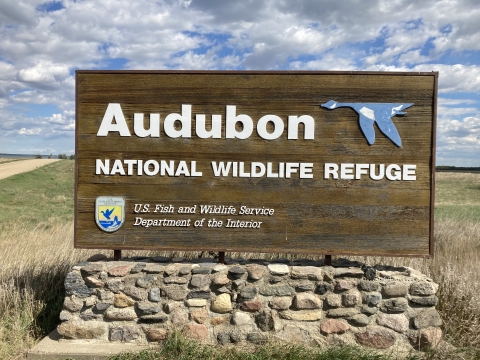More than 80 years have passed since “Black Sunday” — April 14, 1935, when the worst dust storms of the Dust Bowl era tore the topsoil off the Central Plains.
Skies darkened as far east as Chicago and Washington, DC, as winds whipped the dry soil through the air. Farms turned into deserts. In Texas, Arkansas, Oklahoma, Colorado, Kansas and New Mexico, hunger drove thousands of families from their homes.
The same drought that uprooted families and ruined lives also dried up the great prairie potholes of the Northern Great Plains. These shallow wetlands, carved out 12,000 or so years ago by receding glaciers, are the nation’s primary breeding and feeding areas for waterfowl. The potholes earned the region its nickname as the “duck factory of North America.”
As the prairie potholes shrank in the 1930s, duck numbers plummeted. Ultimately, the drop led to a massive mobilization of federal conservation resources. The Dust Bowl became a catalyst for visionary conservation programs.
Healing the Land
In 1934 President Franklin D. Roosevelt named conservationist J.N. “Ding” Darling chief of the Biological Survey (the predecessor to the U.S. Fish and Wildlife Service).
Darling set out to revitalize wildlife areas scoured by the Dust Bowl. One of his tactics: establishing national wildlife refuges along the nation’s four major migratory bird flyways. Almost 2.5 million men employed by the Civilian Conservation Corps worked to restore natural wetlands and wildlife habitats.
Over a decade, the government established more than 63 national wildlife refuges, dedicated to restoring wildlife habitat and reversing environmental degradation. These refuges are still reclaiming ravaged lands. They fill drainage ditches, stabilize the soil with deep-rooted plants, improve water quality, reduce flood risk and protect habitat for migratory birds.
Enriching Soil, Improving Wildlife Habitat
Today, as environmental stressors multiply, Dust Bowl era refuges and others in the Northern Plains are still doing what they can to restore the region's natural ecology. Here are some examples.
J. Clark Salyer National Wildlife Refuge, North Dakota (established 1935)
This 58,700-acre refuge has become one of the most important duck production areas in the country. Originally called Lower Souris Refuge, it was renamed in 1967 in honor of J. Clark Salyer II, who was chief of refuges for the U.S. Fish and Wildlife Service from 1934 to 1961. Under his direction, the system grew from 1.5 million acres in the mid-1930s to nearly 29 million acres upon his retirement in 1961.
Lake Alice National Wildlife Refuge, North Dakota (established 1935)
This 12,100-acre refuge in North Dakota restored former cropland into grasslands. The deep roots of the grasses penetrate and hold the valuable Prairie Pothole Region soils. Refuge managers and biologists have also restored and managed wetlands to reverse the effects of drought and improve habitat for waterfowl, colonial nesting birds and wading birds.
Audubon National Wildlife Refuge, North Dakota (established 1956)
The refuge encompasses more than 14,000 acres of native prairie, grasslands and wetlands managed to provide habitat for waterfowl and other migratory birds. Water management ensures adequate water in drought years. Controlled burns increase soil nutrients and stimulate plant growth.
Devils Lake Wetland Management District, North Dakota (established 1962)
Here, across more than 238,000 acres of the Prairie Pothole Region, refuge biologists seed native grasses and restore wetlands, improving wildlife habitat while reducing erosion, boosting water quality, alleviating flooding, recharging groundwater and offering recreational opportunities.
Fergus Falls Wetland Management District, Minnesota (established 1962)
This five-county area, prized by 19th-century settlers for its abundant wildlife, was devastated by the drought of the 1930s. Working with conservation partners, the Fergus Falls Wetland Management District is restoring the landscape’s ability to provide wildlife habitat and other natural resource benefits in four of the counties. In 2008 and 2009 Fergus Falls restored 635 acres of grassland on 23 separate sites. All told, since 1962, the district has conserved more than 50,000 acres of wildlife habitat.




